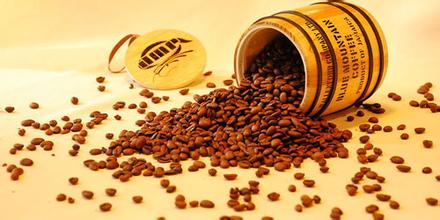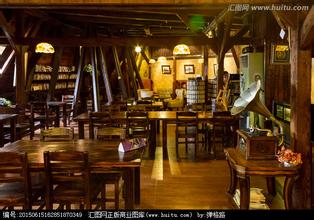Introduction to the storage and baking of coffee beans in China
Chinese coffee beans picking time shelf life how long storage and roasting introduction
The amount of coffee beans picked depends on many factors, most notably the height of the trees and the layout of the farm or plantation. On average, each picker can pick 50-100 kilograms a day. However, only 20% of these beans are real coffee beans, so the average picker can only pick 10-20 kilograms of coffee beans. Coffee beans are packed in bags with a standard mass of 45-60 kg. Therefore, it takes a worker 3-6 days to fill a bag.
It has been calculated that the cost of harvesting a plantation or farm is half the total cost of the whole year. In Brazil, mechanical harvesting has been tried many times to reduce these costs. The machine swings branches across coffee trees so that berries that are loose from ripeness fall into funnels. But these methods can only be used in places where natural conditions are better, and they require high speed in advance, because they can only be used in places where rows of trees can be planted very straight, and they also need to check the beans picked by the machine afterwards and pick out the leaves and branches that have fallen into the hopper. This way of picking is still more troublesome.
At higher altitudes, such mechanical picking methods cannot be adopted, and manual picking must be used, which requires a large number of seasonal labor. Pickers should also be careful not to pick underripe, bad or overripe beans, as they affect the overall quality of the coffee harvested. The original picking method largely guarantees the quality of coffee beans picked. Coffee beans that were no longer good were classified as "normal,""sour," or "fermented," with the last category being "very bad."
(1)hand-picking method
With the exception of Brazil and Ethiopia, most Arabica coffee-producing countries harvest by hand. Hand picking method is not only mature red coffee can be picked, sometimes together with immature green coffee beans and branches picked together, so these immature beans are often mixed with refined coffee beans, especially when refined by natural drying method. If these beans are baked together, they will produce a disgusting odor.
(2)shaking method
This method is to beat the ripe fruit with a random stick or shake the coffee branch, so that the fruit falls into a pile. Large farms use large harvesters, while small and medium-sized farms use the whole family to mobilize people to harvest. This method of shaking the fruit to the ground is more likely to mix impurities and defective beans than the hand-picked method. Some beans from some places will also be stained with strange odors or the beans will ferment because the ground is wet. Countries producing Robusta beans, such as Brazil and Ethiopia, harvest them in this way.

Important Notice :
前街咖啡 FrontStreet Coffee has moved to new addredd:
FrontStreet Coffee Address: 315,Donghua East Road,GuangZhou
Tel:020 38364473
- Prev

Source of American Coffee-Starbucks Ice American Coffee
Source of American Coffee-Starbucks Ice American Coffee English Water to Coffee ratio: a common law is that six ounces of boiling water is better than 1 to 2 tablespoons (tablespoons) of ground coffee powder. You can adjust it according to your personal preference. Water temperature: for the best extraction results, the temperature of your coffee pot should be kept at 195 to 205 degrees Fahrenheit. If the temperature is too low to refine enough, it will make
- Next

How to adjust the grinding degree and how to control the flow rate of freshly ground coffee?
How to adjust the degree of grinding and how to control the flow rate of freshly ground coffee sounds a little complicated, but it is really easy to understand. The extraction rate is the total amount of soluble substances extracted by water from coffee. If the extraction is not enough and the content of soluble substances is too low, the coffee will become sour or lack sweetness. If you explain it scientifically, the rate of dissolution of acids and salts
Related
- What brand of black coffee is the most authentic and delicious? what are the characteristics of the flavor of the authentic Rose Summer Black Coffee?
- Introduction to the principle and characteristics of the correct use of mocha pot A detailed course of mocha pot brewing coffee is described in five steps.
- Which is better, decaf or regular coffee? how is decaf made?
- How much is a bag of four cat coffee?
- How about four Cat Coffee or Nestle Coffee? why is it a cheap scam?
- Which is better, Yunnan four Cats Coffee or Nestle Coffee? How about cat coffee? is it a fake scam? why is it so cheap?
- How about Cat Coffee? what grade is a hoax? which instant coffee tastes better, four Cat Coffee, Nestle Coffee or G7 coffee?
- Process flow chart of coffee making-Starbucks coffee making process what coffee tastes good at Starbucks
- The top ten best coffee beans in the world Rose summer coffee or Tanzanian coffee tastes good
- Yunnan four cat coffee is good to drink?_four cat coffee is a big brand? four cat blue mountain coffee is fake?

